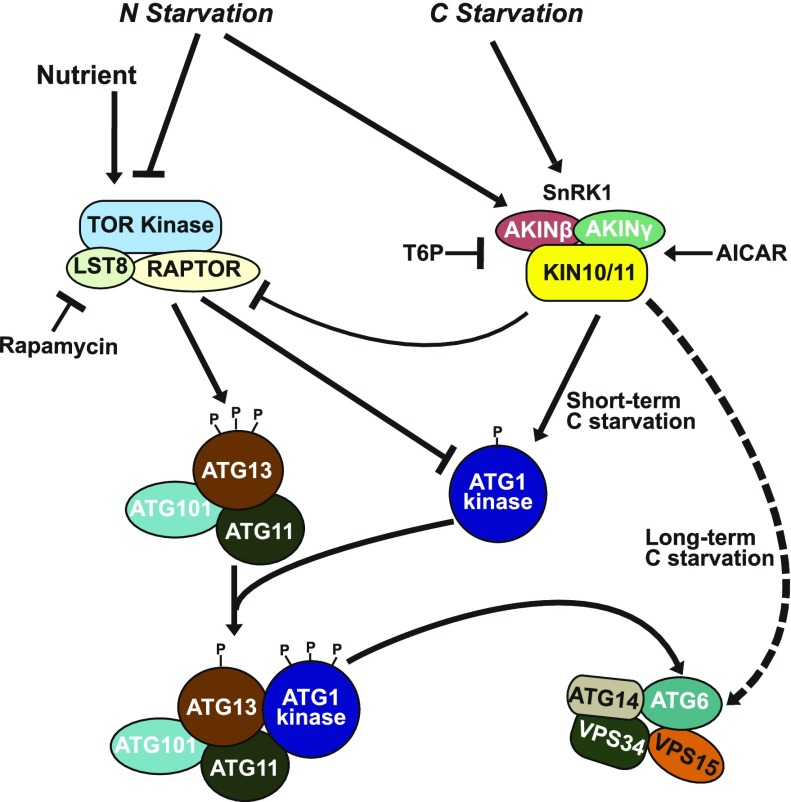Figure 11.
Proposed Model for the Activation of Autophagy under Fixed-Carbon Starvation.
Under nutrient-rich conditions, TOR causes hypophosphorylation of the ATG1 subunit and hyperphosphorylation of the ATG13 subunit within the ATG1 kinase complex, preventing the association of ATG1 with ATG13, and subsequently dampens the kinase activity of ATG1. Under nitrogen and short-term fixed-carbon starvations, the phosphorylation statuses of ATG1 and ATG13 are reversed by SnRK1 and other kinases, allowing ATG1 and other subunits of the ATG1 kinase complex to assemble into an active complex, which in turn activates the PI3K complex to synthesize more PI3-P. Under prolonged fixed-carbon starvation, the PI3K complex is also activated via the phosphorylation of the PI3K subunit ATG6 by the active KIN10 subunit of SnRK1, which bypasses the requirement of the ATG1 kinase complex for autophagy initiation.

